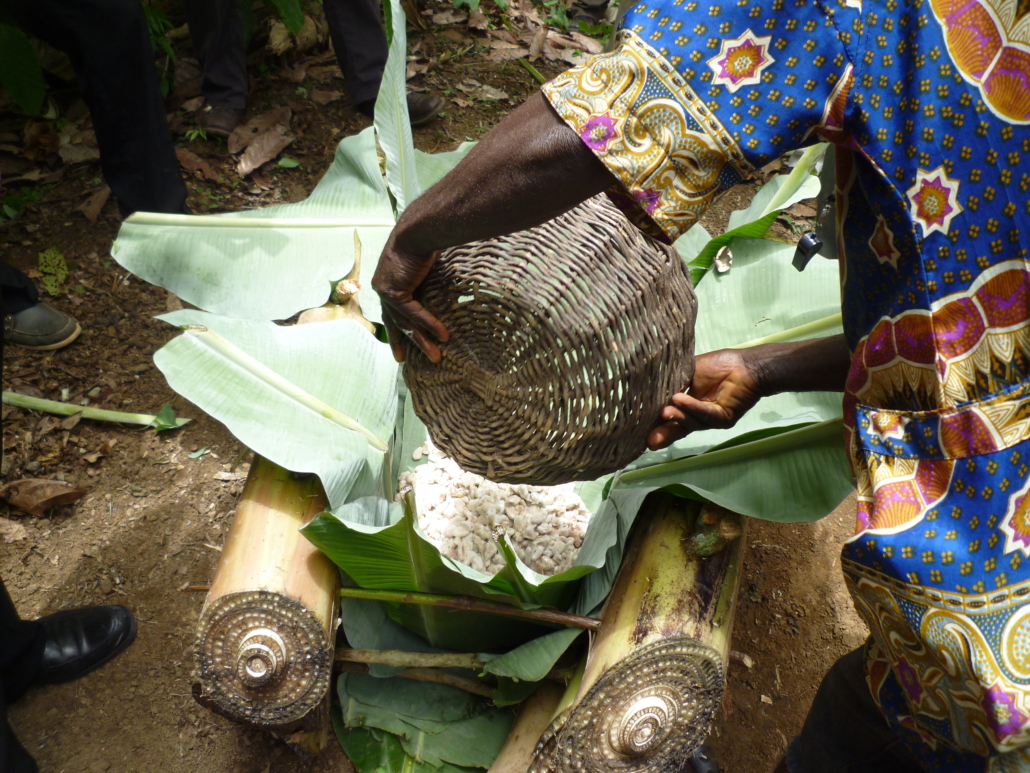7 Facts About Hunger in Côte d’Ivoire
 The West African nation of Côte d’Ivoire, also known as the Ivory Coast, is located on the Gulf of Guinea and the Atlantic Ocean, bordered by five other countries: Liberia, Guinea, Mali, Burkina Faso and Ghana. It is a country of almost 30 million people. Following the conclusion of a civil war in 2011, Côte d’Ivoire experienced economic growth rates averaging almost 7% per year—6.5% in 2023. Despite this growth, however, the country still struggles with endemic poverty and hunger. It ranks 166 out of 193 countries in the U.N.’s Human Development Index which ranks achievement of a long and healthy life, access to knowledge and a decent standard of living. This HDI rank of 166 is “Low,” but Côte d’Ivoire has been steadily, if slowly, improving over the past three decades.
The West African nation of Côte d’Ivoire, also known as the Ivory Coast, is located on the Gulf of Guinea and the Atlantic Ocean, bordered by five other countries: Liberia, Guinea, Mali, Burkina Faso and Ghana. It is a country of almost 30 million people. Following the conclusion of a civil war in 2011, Côte d’Ivoire experienced economic growth rates averaging almost 7% per year—6.5% in 2023. Despite this growth, however, the country still struggles with endemic poverty and hunger. It ranks 166 out of 193 countries in the U.N.’s Human Development Index which ranks achievement of a long and healthy life, access to knowledge and a decent standard of living. This HDI rank of 166 is “Low,” but Côte d’Ivoire has been steadily, if slowly, improving over the past three decades.
Under President Alassane Ouattara, Côte d’Ivoire has focused on the economy and the middle class, launching its ambitious first National Development Plan (2016-2020) in December 2015 in order to transform the country into a middle-income economy by 2020. The 2021-2025 plan aims to achieve upper middle-income status, with attention to the U.N.’s Sustainable Development Goals, regional and international development priorities and the African Union’s 2063 vision. As with other countries, Russia’s invasion of Ukraine and COVID-19 slowed progress.
7 Facts About Hunger in Côte d’Ivoire
- Côte d’Ivoire’s Global Hunger Index is “Serious.” Côte d’Ivoire ranks 86 out of the 125 countries with sufficient data for the GHI’s peer-reviewed assessment, based on population undernourishment, child (under age 5) stunting, child wasting and child mortality. This is a 42.8% improvement in its ranking over the past 15 years, moving it out of the “Alarming” classification to “Serious.” The most serious indicator is child stunting at over 20%, but that has declined from almost 40% during the same time period. All the other indicators are currently under 10%.
- GRFC sees acute food insecurity. For the first time in its history, the 2024 Global Report on Food Crises classified Côte d’Ivoire as a major food crisis because of food access being hindered by the high cost of living. While a high level of food insecurity was not projected, it was estimated that more than a million people would be so classified, although good harvests were expected to improve the situation.
- Hunger in Côte d’Ivoire is significantly impacted by the fact that 37.5% of people in Côte d’Ivoire live below the National Poverty Line; almost 10% are below the International Poverty Line of $2.15/day (2021). Extreme poverty, reflected by the International Poverty Line was expected to have risen to 11% in 2023 but to stabilize in 2024 at 10.2%, continuing to fall to 9.6% by 2026. Economic growth and increased employment are countered by inflation in affecting the extent of poverty.
- The Sahel region crises have impacted Côte d’Ivoire. Armed violence, human rights violations, and climate change have led to significant displacements in the region that includes Burkina Faso, Mali and Niger. The crisis escalated in early 2023, with over 61,000 asylum seekers estimated to have migrated to northern Côte d’Ivoire. Over half are children and over half are women. Needless to say, this has had a significant impact on communities that were already vulnerable.
- The World Food Programme (WFP) has worked with the Ivoirian government and partners since 1968. WFP has concentrated its support in Côte d’Ivoire’s north, west and northeast rural areas identified as having more food insecure and vulnerable people. WFP activities include attention to malnutrition, school feeding and food system improvements.
- Action Against Hunger has worked in Côte d’Ivoire since 2002. Action Against Hunger estimates that there are over three million people facing hunger in Côte d’Ivoire and that they helped 325,778 last year. Food scarcity, especially during the “lean season,” is impacted by conflict disruptions, trade embargoes, crop deficits and widespread poverty. Action Against Hunger’s approach is to prevent, detect and treat hunger, which they have done by partnering with local community members to provide and strengthen health services and the health system. The organization’s work with young people includes a mobile application to facilitate access to information and care in sexual and reproductive health, as well as mental health support.
- Climate resilience can lead to agricultural improvements. Côte d’Ivoire is the largest producer of cocoa in the world, and a successful harvest is vital for Ivoirians to feed their families. Since 2022, the U.N.’s Food and Agricultural Organization, financed by the Green Climate Fund, has worked with Côte d’Ivoire to implement project PROMIRE, Promoting Deforestation-Free Cocoa Production to Reduce Emissions. PROMIRE has restored forest areas and converted conventional cocoa plots to agroecosystems or agroforestry. The European Union, which imports half of the country’s cocoa, will put deforestation regulations in place at the end of the year, so these improvements are critical to the country’s economy.
– Staff Reports
Photo: Flickr
Updated: September 23, 2024
